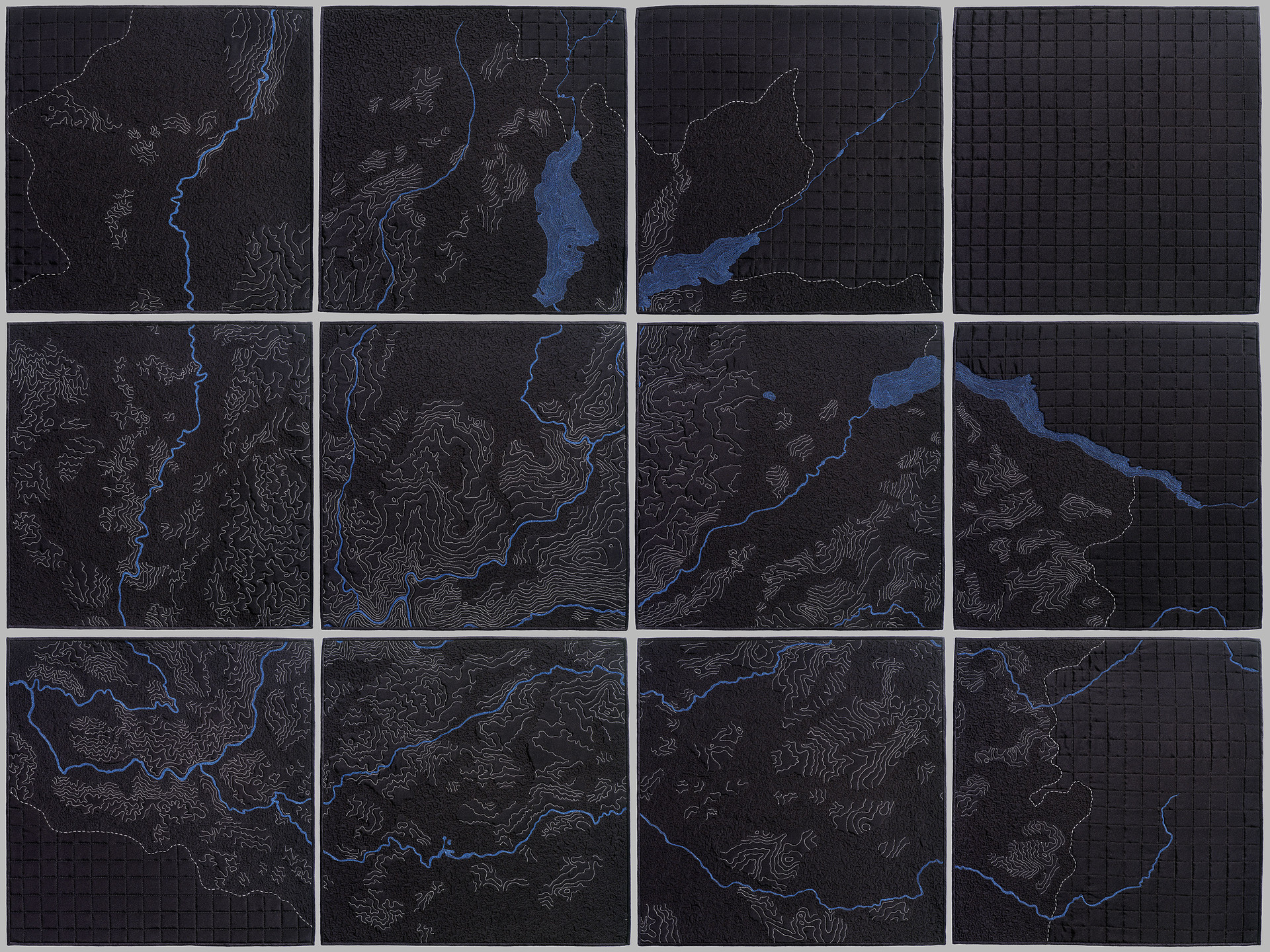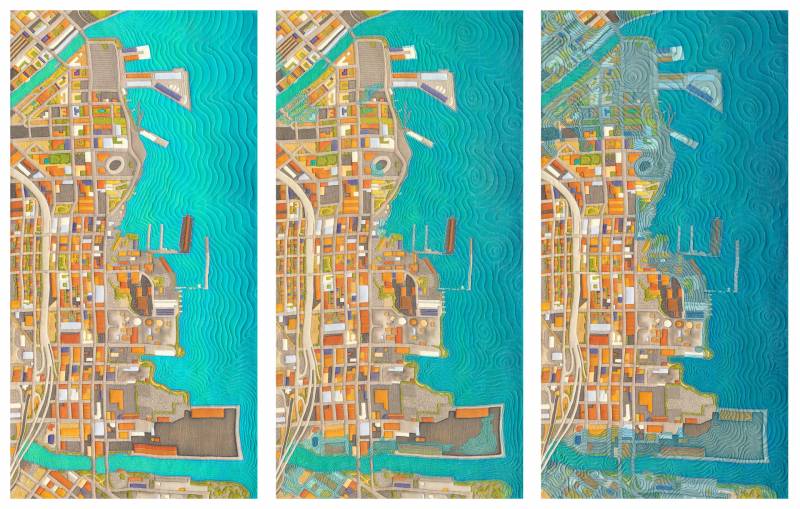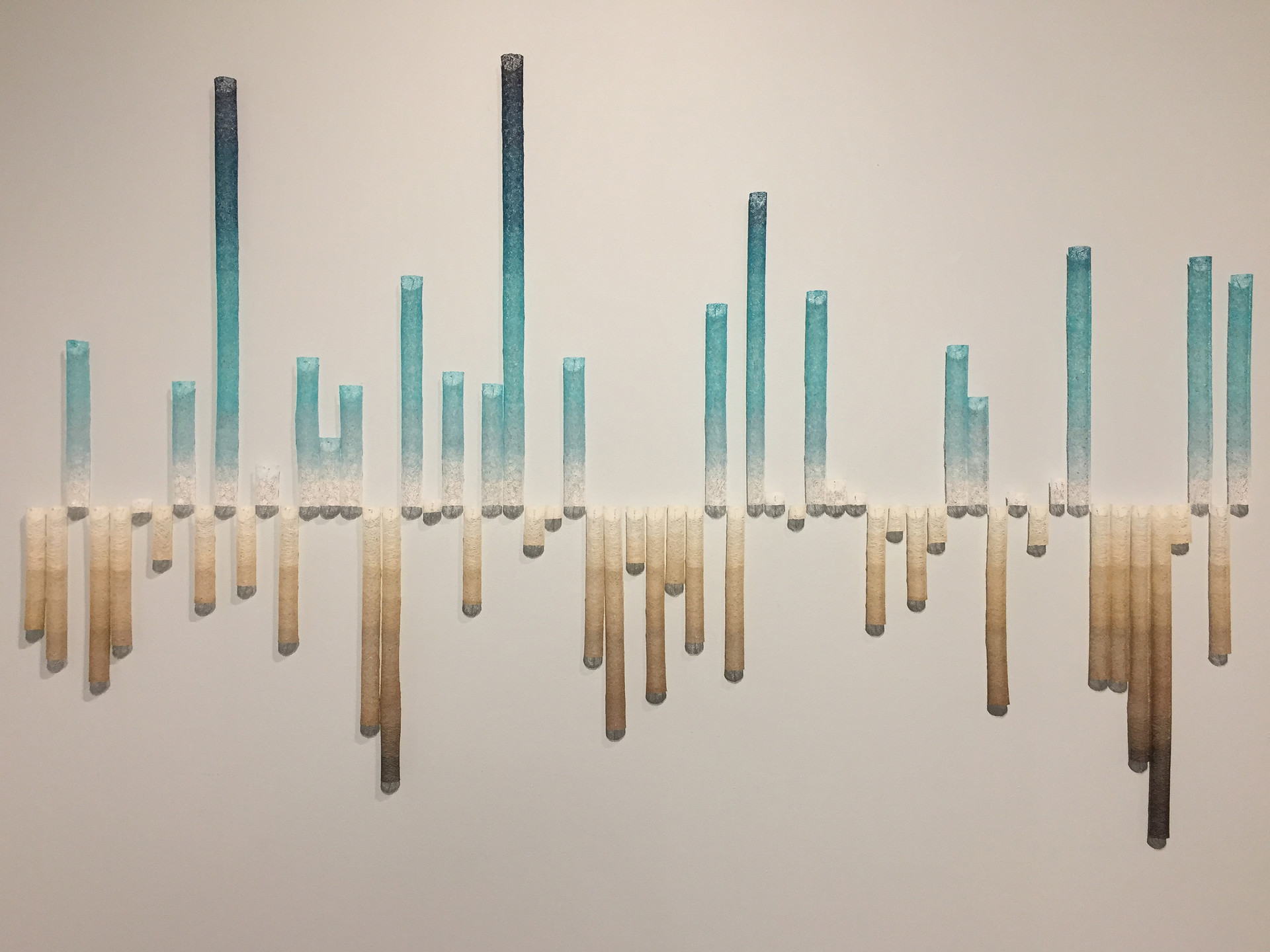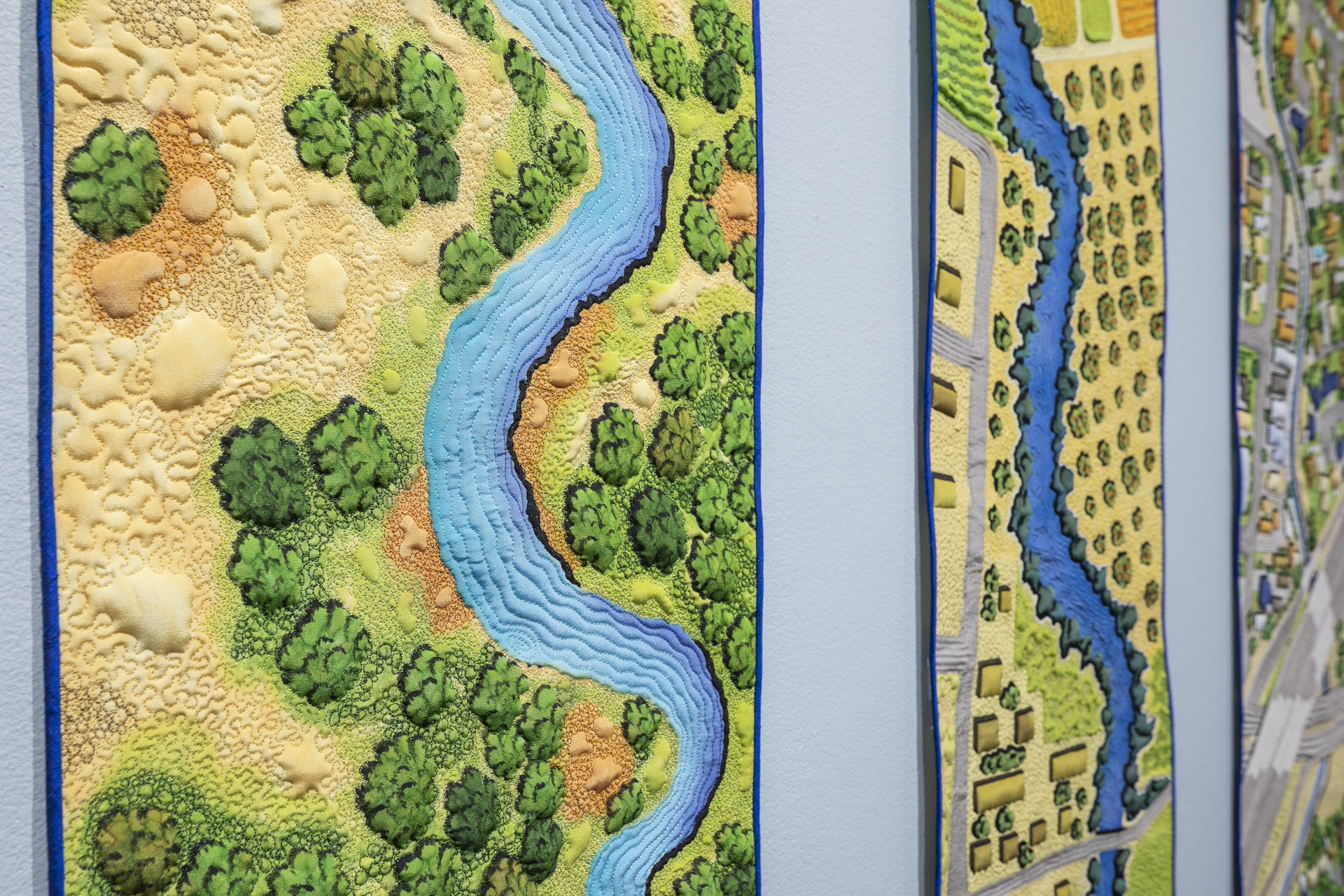The Museum of Craft and Design sits in San Francisco’s Dogpatch neighborhood, within walking distance of the Bay. So when the museum asked Los Altos artist Linda Gass to come up with something new for a show about climate change, she opted for three textile maps of the waterfront.
From one to the next, these quilt-like panels show orange and yellow tiles of city gradually eaten by swirling blue green bay water. Gass calls this triptych “Dogpatch, the sea is rising.”
“So the first piece shows how things look today,” Gass explains. “The second one shows the impact of three feet of sea level rise, and the third one shows the impact of six feet. By 2100, there’s predictions anywhere from three to six feet, depending on how successful we are in reducing our carbon emissions.”
It’s kind of a “choose your future” multiple choice test. “If you look at the six foot one, you’ll see that the Oracle Stadium where the Giants play, or the new Chase Center where the Warriors play, are underwater,” Gass says.

It’s beautiful and horrifying at the same time. But Gass doesn’t mean it to be depressing. “I like to use a soft and comforting medium to engage people and to draw them in to this narrative that I’m telling them, that could be a little bit hard to take in. The point of my work is to give people hope. We do have a lot of power as humans over our choices.”




